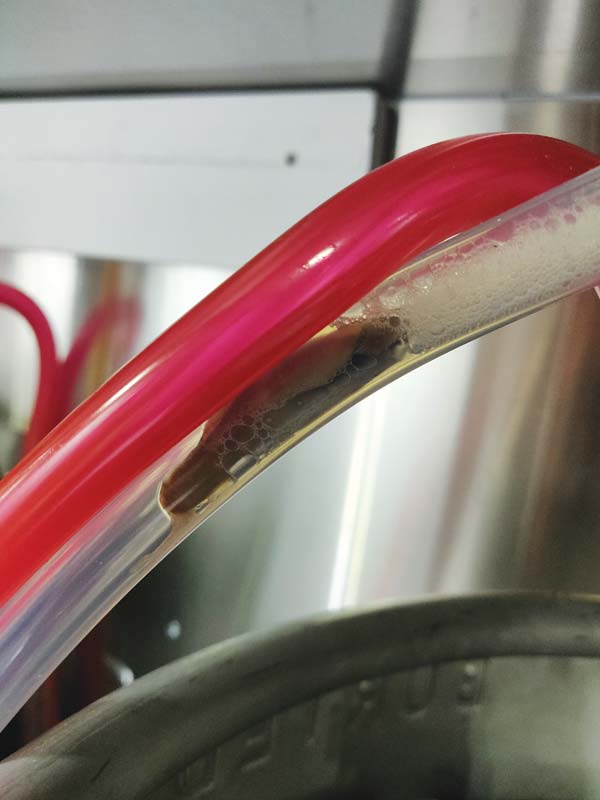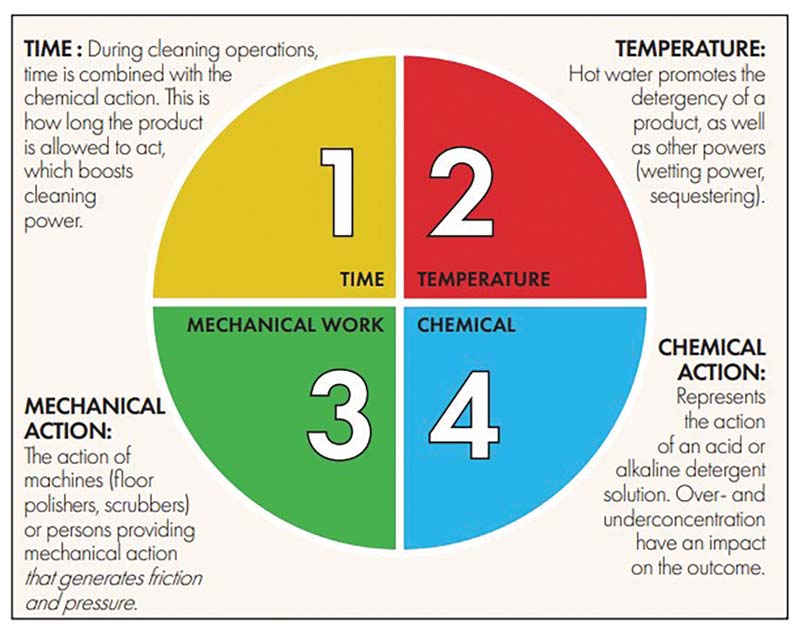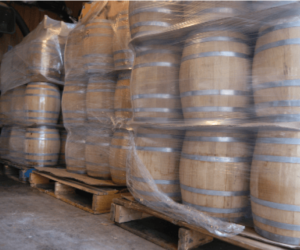Don’t Forget Your Lines! How and why you should clean your draft lines
Remember your favorite dive bar in college? The floors were slightly sticky and the foosball table gathered a crowd. Your favorite macro was always on tap although it tasted slightly different than when you drank it from a can. But you weren’t a beer snob yet so you didn’t think much about it.
Now that you’re a brewer you tend to frequent a different type of establishment. Brewery taprooms, craft beer bars, and brewpubs are more of a draw than the happy hour specials.
You’re also focused on getting folks to your brewery and trying your beers at craft beer bars and restaurants. Not only do you need to get customers in the door but you want them to keep coming back.
According to Andrew Coplon of Secret Hopper, “The ultimate taproom experience exists at the intersection of quality beer, memorable atmosphere, and engaging staff.”
Today we’re going to focus on the quality beer portion of the taproom trifecta, and more specifically, what comes out of the faucet.
Consistency is important not only from batch-to-batch, but also from the first pint to the last pint of each keg you pour through.
There are plenty of ways to improve the quality of your beer, to get started you can check my “Top 5 Ways for a Nano Brewer to get Started in Quality Control.” But what happens once the beer leaves your brewery, either to venture into the outside world or take the short trip out to your own brewery taproom? Making great beer isn’t just choosing the best ingredients and honing your skills, there’s a whole quality control component and it doesn’t end when the beer is packaged. Consistency is important not only from batch-to-batch, but also from the first pint to the last pint of each keg you pour through.
You spend all this time and energy making the best beer you can and if that beer goes on tap with dirty lines, all that hard work is being wasted. When beer quality declines, so does your customer base.
Do you monitor or validate how clean your tap lines are? Are you on a regular cleaning cycle? When your beer goes to another bar, do you ask about their draft line cleaning regime? Taproom breweries must implement a cleaning schedule, follow proven cleaning methods, and validate cleaning. And if you distribute draft beers to other bars, you need to ensure your beer is flowing through properly maintained lines.
Every pint served might be someone’s first experience with your beer and if they don’t like it, they might not give it another chance. It doesn’t matter if the problem is the draft line and not your beer, the customer only knows they didn’t enjoy that pint.
So how do dirty draft lines ruin a beer?
Things that like to grow in beer lines are the same things we worry about in the rest of the brewery. Just as it’s important to keep our brewing and fermentation equipment squeaky clean to avoid unwanted bacteria or wild yeast from growing, we need to make sure our beer dispense equipment isn’t introducing any unwanted off-flavors due to microorganism or beer stone buildup.
Mold can grow in faucets and vent holes or on the mouth of a keg and once tapped that mold can travel through the line and even end up in a glass.

Even the best brewed beer in the world can be ruined in moments when sent through a poorly maintained draft system. Photo courtesy of Bill Jablonski/DraftNauts.com
Pediococcus, Lactobacillus, Pectinatus, and Acetobacter can all produce lactic or acetic acid imparting various sour notes to your beer. They might also introduce turbidity or a ropey texture to the beer, leaving regular customers to wonder if they were served the correct beer or not. Pediococcus can produce diacetyl leaving you with a buttery beer and a rotten egg aroma might be due to Pectinatus.
Wild yeast can be introduced to draft lines from infected or intentionally wild beer going on tap before your new beer and sticking around for a while. Yeast is everywhere and it can be found on faucets and kegs from the air and build up over time without proper cleaning. If left unchecked, beerstone can flake off and end up in your beer, never an appealing sight.
When biofilms or beerstone are allowed to build up they affect the balance of the dispense system, which can leave you with foamy pours and wasted beer.
The Cicerone® Certification Program, which has become an industry standard, teaches their students just how easy it is for a great beer to be damaged by improper storage, handling, or service. Those who seek certification are tested on not only proper draft line cleaning techniques, but the goals of cleaning, safety concerns for consumers and operators, and detailed criteria for a proper clean.
If you can’t see that there’s anything wrong with the lines, and often you can’t (unless the lines have really been neglected) you don’t know you have a problem. You can’t see yeast and bacteria cells with the naked eye and even if beerstone and biofilms have had the chance to build up in the line, that’s also out of sight and out of mind.
Line cleaning takes time and it wastes beer. You have to flush out all that beer in the lines. The process may warm up your lines leaving you with foamy glasses once you get beer back in the lines. And you have to run more beer through the lines when you’re done. It’s expensive to invest in the equipment needed to clean lines. You’d rather spend that money on something more useful for the brewery or ingredients for the next batch. Yes, cleaning your lines takes time, but so does getting new customers!
How do you clean your lines?
First you’ll want to write a standard operating procedure (SOP) detailing how to clean the lines. This should include information on who will be cleaning the lines, why it’s important, what the procedure is, safety precautions and personal protection equipment needed, resources, and revisions. Following a standard protocol will help ensure the draft lines are safely and effectively cleaned on a regularly scheduled basis.
You need to know exactly what chemicals you will be using and have the Safety Data Sheets available and reference them before you start. Consult your chemical supplier for proper use and storage such as temperature and contact time.
Typically you’ll be using a caustic solution to clean your lines. When handling this make sure you are wearing personal protective equipment (PPE) including safety goggles (Note: Goggles and not glasses). You don’t want anything dripping into your eyes or splashing up the sides. You’ll also want gloves, pants, and close-toed shoes.
Once you are safely attired you may get to work. Make sure you let everyone near you know you’ll be working with caustic and put signs up on the tap handles. There are plenty of horror stories and lawsuits from people accidentally ingesting caustic when lines are being cleaned because they weren’t properly labeled. It can lead to severe and permanent damage to your throat and stomach.
The two most common ways of cleaning draft lines use either a circulating pump or a cleaning canister. The Brewers Association, and most others, recommend a circulating pump since the mechanical force does a much better job at removing beer stone and buildup in the lines. Another plus with the circulating pump is that you can’t accidentally serve a customer caustic while you’re cleaning the lines because the faucets need to be removed and linked together. More details on the circulating pump method can be found later in this article.
After you’ve taken care of safety precautions like signage and putting on PPE, you’ll need to disconnect the beer and rinse the lines with water. Follow the “Sinner’s Circle” for a successful clean, which means that you’re using the right chemical at the right concentration, for the correct length of time, at the right temperature, and with mechanical action.

Following the Sinner’s Circle guide to cleaning best assures taproom draft systems will undergo a successful cleaning cycle.
© Brewers Association, Draught Beer Quality Manual (2019)
Typically you’re using a 2% caustic solution that is run through the lines every two weeks for 15 minutes at a rate of 1.5–2 gallons (5.7–7.6 L) per minute. If you’re using a cleaning canister or pressure pot you’ll need more time since the caustic is stationary. Check the chemical manufacturer’s recommended temperature range and keep in mind that if your glycol can’t be turned off that’s going to cool your cleaning solution. Also be careful about using too hot of a temperature that may ruin your lines; 80–100 °F (27–38 °C) is usually the sweet spot. Don’t forget to run the solution both forward and in reverse with your pump to really clean your lines.
Once the cleaning process is done, rinse the lines with water and use a pH meter or a pH strip to make sure the pH has returned to neutral and ensure all the cleaner has been rinsed from the line. Then you can bring beer back over and remove any cleaning signs.
Lines should be cleaned with caustic every two weeks with a quarterly acid cycle to help remove beerstone buildup. Don’t forget to also clean keg couplers, faucets, and any foam-on-beer, or FOB, devices.
Make cleaning a priority
Denise Jones, who has held roles as Brewmaster at Third Street Aleworks and Moylan’s Brewing, and the Master Distiller and a staff Brewmaster at Weyermann Specialty Malts in Bamberg, Germany, stresses the importance of line cleaning, “It’s a sacred chore . . . My crew knew it was a morning chore and they made it a priority before bar staff came in. Beer tastes better with clean lines and I slept better with dreams of clean draft lines.”
Make good beer, clean your lines, and keep your customers coming back for more.
Resources on draft line cleaning
The ultimate free resource on all things draft-related is the Brewers Association’s Draught Beer Quality Manual, which can be found at www.brewersassociation.org/educational-publications/draught-beer-quality-manual/
A hard copy of the manual can be purchased as well. A few spin-offs of this robust resource include a BA Collab Hour webinar on cleaning draft lines www.crowdcast.io/e/BACollabHour-CleaningDraughtBeerLines
And there is also a draft line safety course. All of which are free resources for both members and non-members of the Brewers Association.
A “Basic Guide to Line Cleaning and Maintenance in Draught Beer Systems” by Keith Lemcke is available to members at www.mbaa.com/publications/tq/tqPastIssues/2016/Documents/TQ-53-4-1118-01.pdf and check out the Master Brewers Association’s podcast episode on draft line cleaning www.masterbrewerspodcast.com/027


